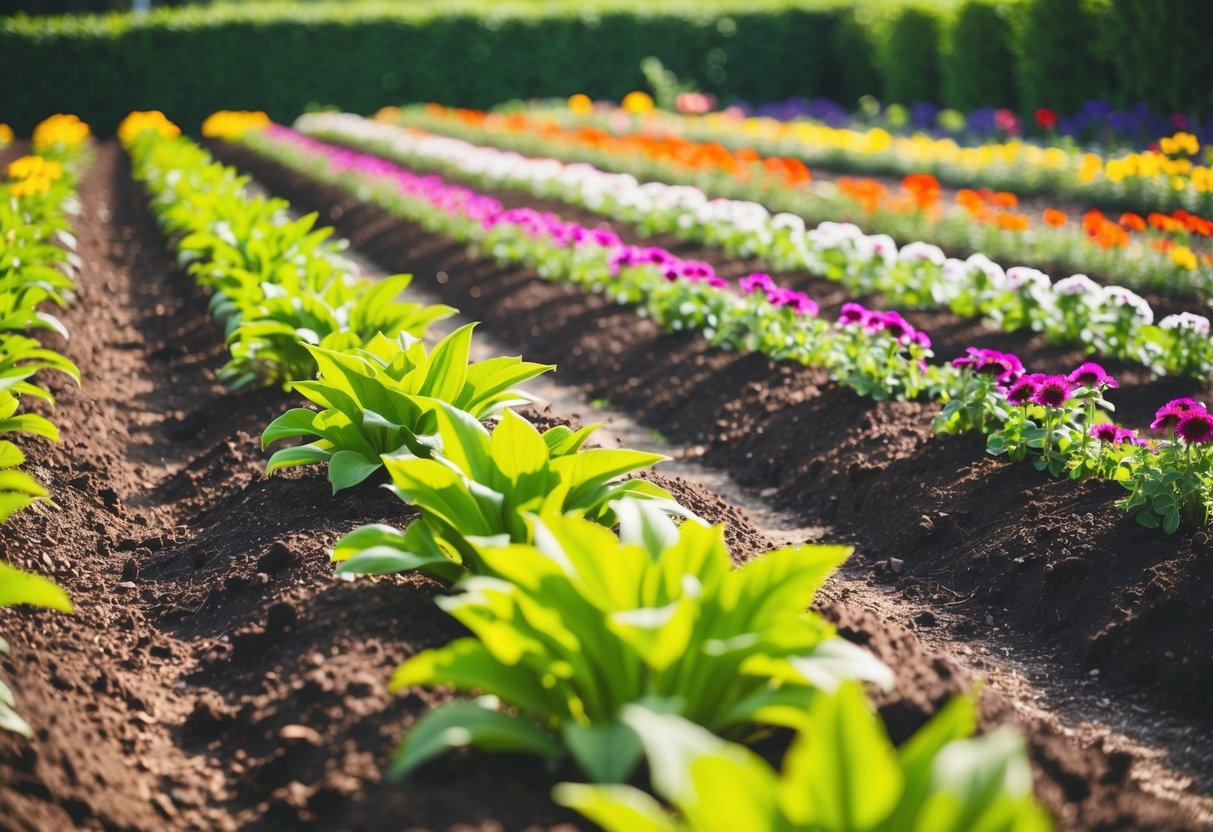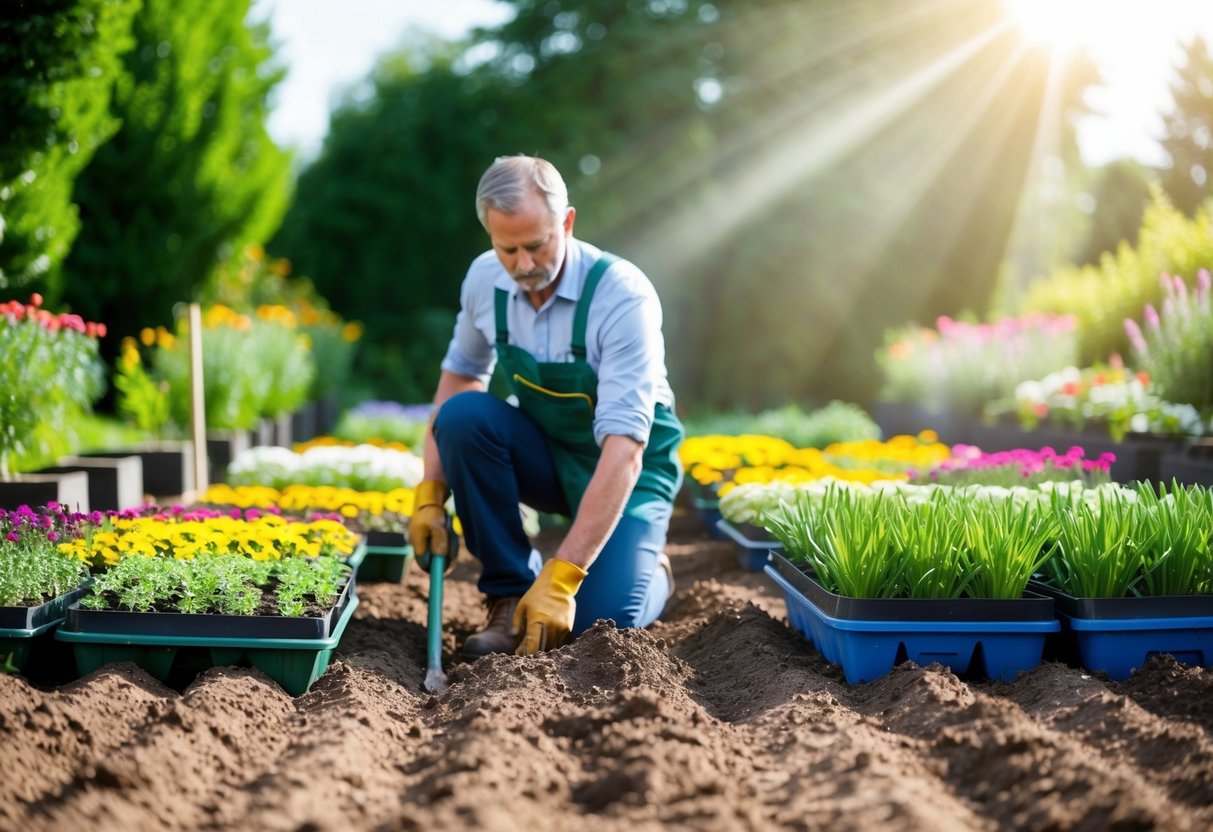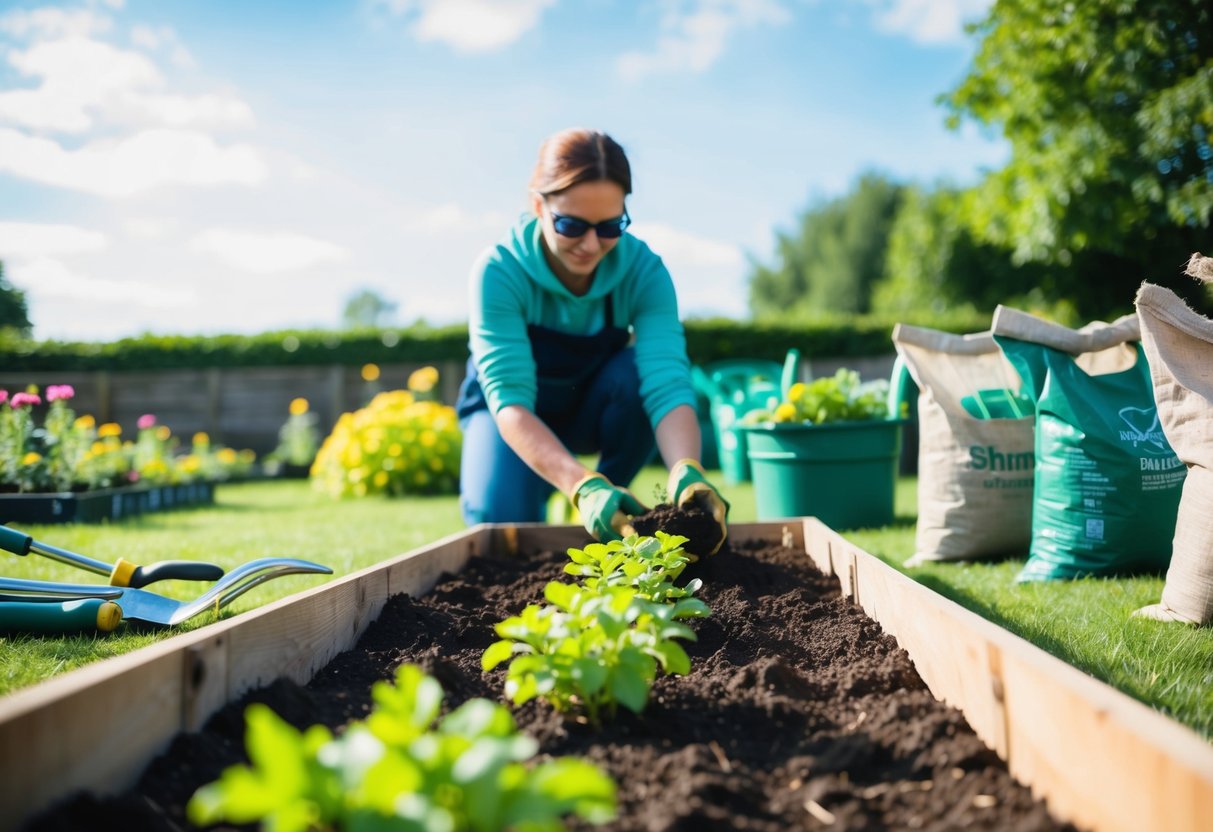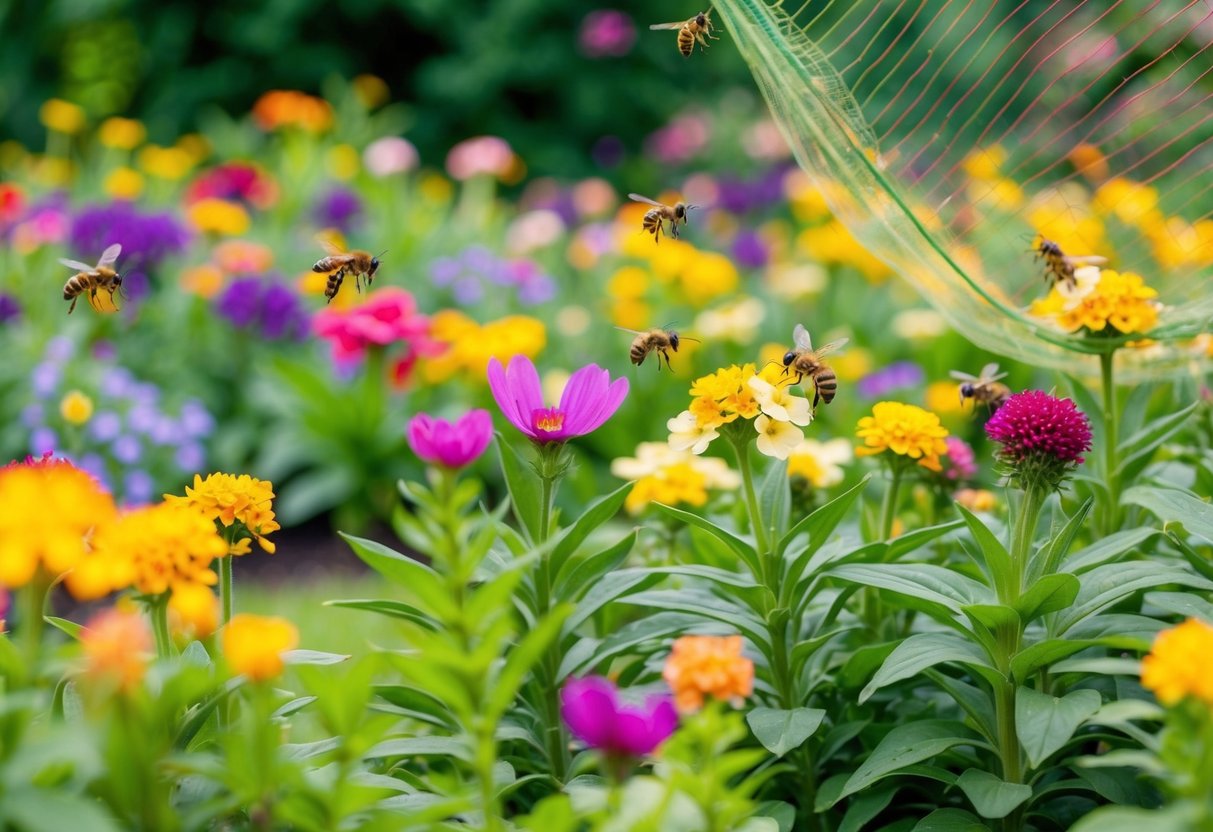Can I plant bedding plants now? Tips for a Thriving Garden
Planting bedding plants can be exciting, but timing is key. You can usually plant bedding plants after the risk of frost has passed, typically around late April or May. This timeframe ensures that your plants have the best chance to thrive.

If you’re unsure about frost timing in your area, it helps to keep an eye on the local weather. Bedding plants like fuchsia, petunia, and geranium are popular choices and often go on sale in May. This is a great opportunity to add color to your garden without breaking the bank.
Whether it’s your first time or you’re a seasoned gardener, understanding when to plant can make all the difference. If you need more tips on choosing and caring for your plants, diving into the specifics can guide you to success. Let your garden bloom beautifully this season!
Determining the Right Time to Plant Bedding Plants

Choosing the best time to plant your bedding plants involves understanding your local climate and the specific needs of the plants you’re growing. Factors like plant hardiness and frost dates play a crucial role in ensuring your plants thrive.
Understanding Plant Hardiness and Climate Zones
The hardiness of your plants will help you decide when to plant them. Hardiness refers to a plant’s ability to survive in your local climate. To determine what types of plants are suitable, check the plant hardiness zone in your area. Annuals and perennials have different hardiness levels.
Hardy annuals can tolerate cooler temperatures and might be ideal for early planting. Summer bedding plants usually prefer warmer conditions, while winter bedding plants are more suited for colder months. Understanding these categories ensures you plant at a time that aligns with your local climate conditions.
Importance of Frost Dates in Planting
Frost dates are key in deciding when to plant bedding plants. The first and last frost dates indicate when you can safely plant outdoors. The risk of frost is a major concern, especially for tender annuals.
To protect your plants, always wait until after the last expected frost date to plant summer bedding plants. On the other hand, you might want to plant winter types before the first frost. Check with local gardening resources or guides for specific frost dates in your area, ensuring you’re in the clear to give your plants the best chance to thrive.
Selecting Bedding Plants for Your Garden

Choosing the right bedding plants for your garden involves considering whether you want plants that last for a season or ones that return year after year. Different plant varieties offer unique colors and styles, so knowing your options will help you create a stunning garden.
Annuals vs Perennials
Annual plants are a great choice if you enjoy changing your garden’s look each year. These plants complete their life cycle in one growing season. Popular annuals include petunias, marigolds, and cosmos, known for their vibrant colors.
Perennials, on the other hand, grow back each year, making them a long-term investment. Geraniums and fuchsia are common perennials that bring color yearly. While annuals require replanting, perennials need care to keep them healthy and blooming. Consider your time and resources when deciding between them.
Popular Bedding Plant Varieties
Selecting exciting and colorful plants can bring life to any garden. For a splash of continuous color, consider pansies, begonias, and lobelia. These are vibrant choices often found at your local garden center.
Looking for a unique touch? Try gazania for its bold pattern or calendula for its warm tones. Dahlias and violas also add texture and depth. It’s important to select plants that suit your garden’s conditions. This way, your chosen plants will thrive and create a beautiful display.
Preparing Your Garden for Planting

Getting your garden ready for planting is key to ensuring your bedding plants thrive. Focus first on soil quality and then consider the best containers for your plants.
Soil Preparation and Composting
Start by testing your soil to understand its pH and nutrient content. This helps you make necessary adjustments for optimal plant growth. If your soil is too acidic or alkaline, adding lime or sulfur can help balance the pH.
Composting is a great way to enrich your soil. Use kitchen scraps and yard waste to create compost that improves soil fertility. Mix the compost into your garden beds to add nutrients and improve soil structure. This encourages healthy root development and better water retention.
Don’t forget to remove any weeds or debris to ensure a clean start. Adding mulch can also help to retain moisture and suppress future weeds. This simple step sets the foundation for successful planting.
Choosing the Right Plant Containers
Selecting the right containers is crucial for your plants’ health. Consider the size, material, and drainage capacity of pots, window boxes, and hanging baskets. A pot that is too small can restrict root growth, while one that is too large may retain excess moisture.
Terracotta pots are a popular choice for their breathability, but they can dry out quickly. Plastic pots, on the other hand, retain moisture longer but may lack proper drainage. Ensure your containers have drainage holes to prevent waterlogging.
For patio containers, choose durable materials that can withstand outdoor conditions. Grouping plants in large containers creates an impressive display and is easier to manage than multiple small pots. Consider the aesthetics, as well as the growing needs of your plants, when deciding.
Planting and Maintenance Tips

Planting bedding plants correctly and maintaining them is essential for thriving gardens. Focus on proper planting techniques, regular watering, and practices like deadheading and pinching to keep plants blooming continuously.
Proper Planting Techniques for Bedding Plants
First, select an area with good soil that drains well. Use a trowel to dig holes twice the size of the plant’s root ball. Place the plants in these holes, making sure they are at the same depth as they were in their original pots.
Space them appropriately to allow room to grow. Surround them with loose soil and press gently to eliminate air pockets. After planting, water the area thoroughly to help roots establish. Some plants benefit from adding a slow-release fertilizer to support growth. Look for nutrient-rich options suitable for flowering plants.
Ongoing Care and Watering Needs
Regular watering is crucial, especially during dry spells. Water thoroughly when the soil feels dry to the touch. It’s often best to water in the morning to allow plants to absorb moisture before the heat of the day.
In addition to water, plants might require extra nutrients. Consider feeding them with a balanced liquid fertilizer every few weeks. Always follow the label instructions closely to avoid overfeeding, which can harm the plants. Watch for any signs of pests or diseases, and address them promptly to maintain healthy growth.
Deadheading and Pinching for Blooming Continuity
Deadheading is the process of removing faded flowers. This encourages plants to produce more blooms rather than seed. Use clean, sharp scissors or your fingers to nip off dead flowers just above the first set of healthy leaves.
Pinching involves removing the growing tips of plants to promote bushier growth. Simply pinch out the top inch of new growth between your thumb and forefinger. This method encourages side shoots to develop, which leads to more flowers. Regularly practicing these techniques can keep your bedding plants vibrant throughout the growing season.
Attracting Pollinators and Protecting Plants

Creating a garden that attracts pollinators while also protecting your plants is both rewarding and beneficial. You can encourage helpful insects like bees and butterflies and keep harmful pests away with the right strategies and plant choices.
Encouraging Beneficial Insects to Your Garden
To draw pollinating insects like bees and butterflies, consider planting a variety of flowers. Busy Lizzies, known for their bright colors and long blooming season, are a great choice. These plants thrive in shaded areas and attract diverse pollinators.
Nasturtiums are another excellent option, especially since they can grow in poor soil and still offer brilliant blooms. These flowers attract bees and butterflies, and their leaves are a favorite for ladybugs, which help control pests. Alyssum, with its sweet scent and tiny white flowers, is another favorite of pollinators. Its low-growing nature also makes it ideal for bordering or filling in garden gaps.
Pest Control and Disease Prevention
Preventing pests and diseases starts with choosing strong plants like those mentioned above, which often resist many common garden issues. Additionally, you should consider companion planting. By planting nasturtiums alongside your vegetables, you can deter pests like aphids and caterpillars.
Regularly inspect your plants for signs of disease and pests. If you spot any, address the issue quickly with solutions like neem oil or insecticidal soap. These options are less harmful to beneficial insects. Keeping your garden clean by removing dead leaves and debris also helps reduce risks of disease.
Using beneficial insects like ladybugs and lacewings can further control pest populations naturally. Integrating these insects into your garden reduces the need for chemical treatments, promoting a healthy environment for both plants and pollinators.







